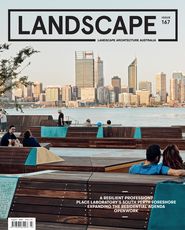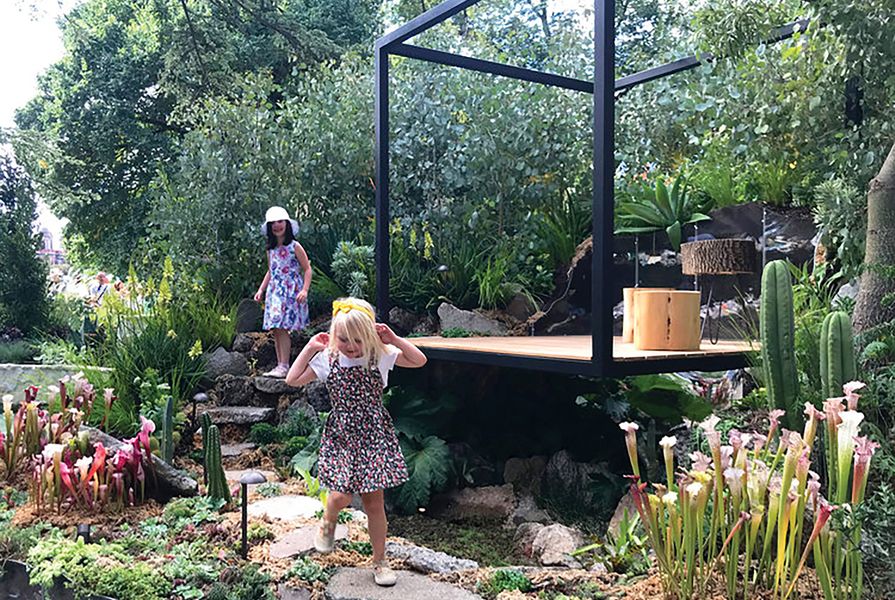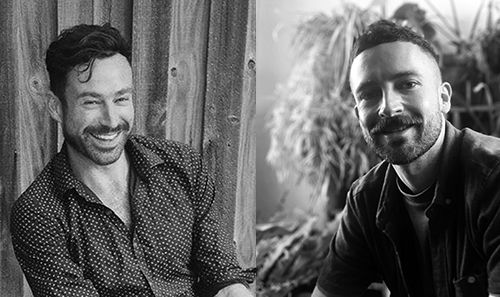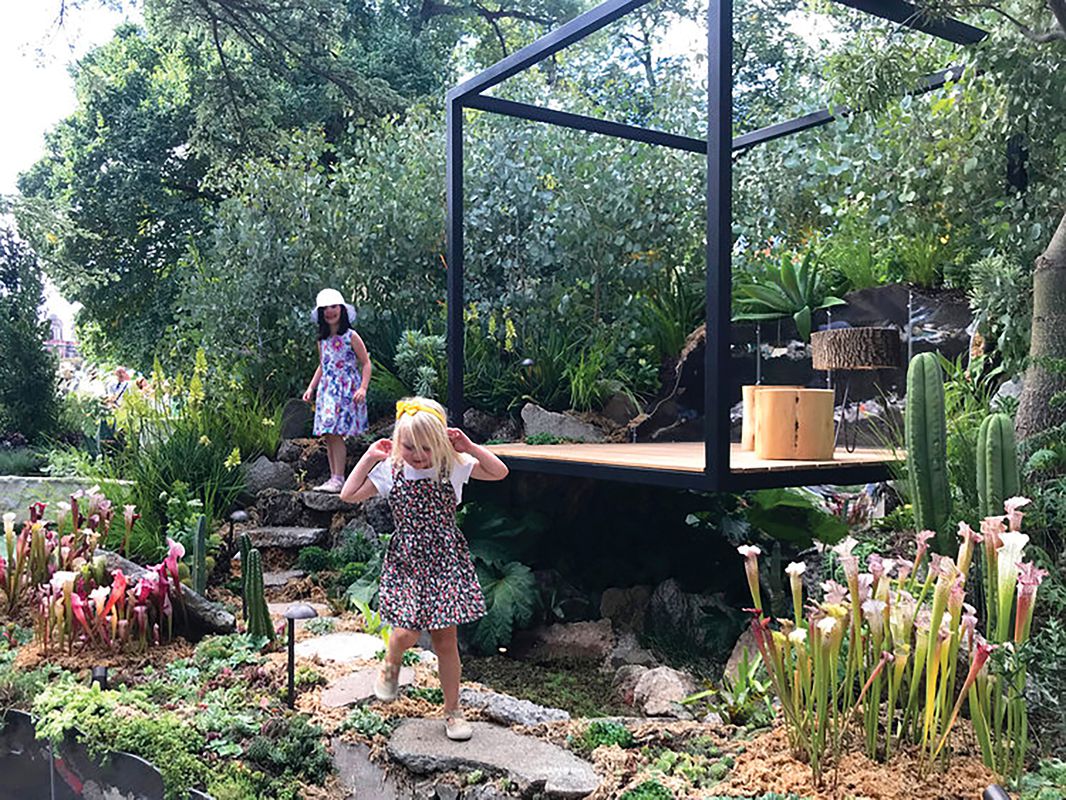Alistair Kirkpatrick (left) and Anthony Sharples (right), directors of AKAS Landscape Architecture.
Jen Lynch: Could you give an overview of a project you’ve been working on recently?
Anthony Sharples: We’re currently working on a project in Brunswick East, which is a classic residential project. The client wanted a landscape that felt wild and almost like a forest. The whole idea with the project is that there are no edges – it questions the notion of edges between different elements. The design, for instance, involves an indigenous lawn, which doesn’t have an edge; we’re allowing the client to dictate the shape of that lawn. We’ve also chosen not to have any hard surfaces – we’re using gravel as a mulch and strategic concrete sleepers, which jut through the garden and take you on a journey. All of these elements blend together.
Alistair Kirkpatrick: All the species we’ve selected for the garden, once established, are resilient and can cope with Melbourne’s rainfall, and a lot of the species are non-hybridized, meaning that they can produce viable seed. These species allow the garden to find its own rhythm, self-sow, and move about, so that, even with minimal maintenance, it still looks designed. This touches on something that separates residential gardens from public projects – maintenance is absolutely key to how a garden evolves. The garden, by very definition, is far more intimate and has a direct dialogue with the clients.
JL: Will you leave the client with any sort of documentation that provides advice around that maintenance process?
AS: We generally go back to each project at least once a year, to have a look at how everything’s growing. For our clients who aren’t gardeners, we usually link them with a gardener. It really depends on the individual and also what involvement that client wanted to start with, because that really dictates what we design for people.
JL: What does research look like for your practice?
AK: Because we are so plant-focused, the body of our research is vegetative. Because we’ve done so many different residential projects in so many different areas, we’ve discovered which plants are going to work in every situation. We’re also constantly testing new species.
AS: A lot of our learning comes from going back to projects, when we see how things have grown. That’s how we build knowledge for the next project; it becomes our design suite. We apply the knowledge we gain through our residential projects to public projects as well.
AK: We also undertake research through design studios we co-teach, which are all about bottom-up design, thinking about what the landscape is telling you about the kinds of ecologies and micro-climates and conditions that are happening on the site. We approach designing clients’ gardens in the same way – we always take into account aspect and shadowing from other properties, we always investigate the geology and the soil, and our gardens are informed by the biological and geological conditions of the site.
JL: What do you see as key challenges and future opportunities for landscape architects working on residential projects?
AK: If landscape architects are goin to have a viable future in residential garden design, there needs to be a focus within the academies on teaching about not only plants but systems knowledge. Given the fact that that body of knowledge has been consistently devalued and degraded within the academies, overseas and in Australia, you’re going to end up with a generation of landscape architects that don’t know anything about soils or plants or hydrology. If they go into gardening and garden design, they won’t have the requisite skills.
AS: I would absolutely echo that. If you were trying to go into residential garden design without plant knowledge, you couldn’t do it, because a majority of the knowledge [required] there is on plants – at least 70 percent.
AK: Especially with a changing climate, systems knowledge, botanical knowledge and environmental ecological knowledge are going to be critical to keeping our discipline relevant and viable.
To read Jen Lynch’s interview with Simone Bliss of SBLA go here, for her interview with Sophie Dyring of Schored Projects, visit here and for her chat with Mark Jacques of Openwork, go here.
Source

Practice
Published online: 18 Jan 2021
Words:
Jen Lynch
Images:
AKAS
Issue
Landscape Architecture Australia, August 2020














